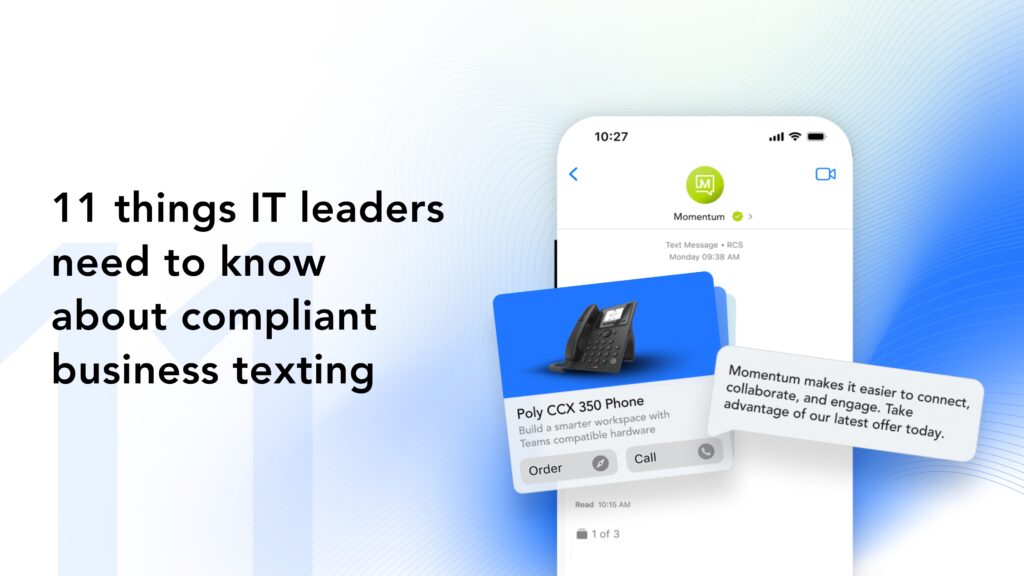Here’s a scenario you’re likely familiar with. You just installed a VoIP system and are eager to begin reaping the benefits.
There’s one problem. It’s not working correctly.
Perhaps you’re experiencing a lot of dropped calls for reasons you can’t explain. Maybe you keep dealing with a cluster of ringing and calling at the same time. It’s more than possible this is the result of your SIP ALG feature.
What’s SIP ALG? SIP ALG stands for Session Initiation Protocol Application Layer Gateway, a feature commonly found in commercial routers designed to enhance the reliability of SIP calls by modifying VoIP packets.
Let’s take a look at what SIP ALG is and why it’s sometimes (but not always) a good idea to disable it.
Defining the SIP ALG feature in your VoIP system
Here’s a quick refresher to get you started. Your VoIP system is short for ‘voice over internet protocol’, relying on a broadband connection to connect calls or leave voicemail messages.
SIP ALG is an acronym referring to certain features used in your VoIP system to provide you with flexible, reliable call services. It’s actually found in a variety of networked routers and is used to manage incoming information. Think of it as a firewall, but for your phone service.
Network address translation (NAT) changes private IP addresses into public ones, and SIP ALG was introduced to address the limitations of NAT. However, despite its intended purpose, SIP ALG often disrupts VoIP call quality by interfering with the underlying functionality of SIP and signaling protocols.
SIP (Session Initiation Protocol) explained
Consider SIP the backbone of your VoIP apps and devices. It’s responsible for registering your devices and linking them together. SIP messages are crucial in SIP communication, as they facilitate the exchange of information between clients and SIP endpoints.
Any time your VoIP session works properly, you can thank SIP for it. Sadly, SIP can still go a little too far and interfere with your calls if it’s not regulated. Generally, Session Initiation Protocol is used to handle elements, such as:
Regulating call audio
Maintaining call presence
Managing voicemail
ALG (Application Layer Gateway) explained
Now for the other side of the coin. The Application Layer Gateway is used to improve connectivity between your devices, sorting out data packets so they’re not lost in the shuffle. The ‘ip nat service’ command is crucial in configuring routers for SIP, as it helps manage NAT services to ensure smooth VoIP operations.
Do you often experience dropped calls out of nowhere?
Are you sometimes left with one-way audio that doesn’t resolve itself?
You could be experiencing an ALG that isn’t compatible with your VoIP package.
Common signs you have an incompatible SIP ALG
If you regularly use a home computer or laptop, you’ve probably had incidents where your firewall interfered with essential functions. This is a common hiccup in today’s technology and a sign you need to reassess a few things.
You know your VoIP is struggling with SIP ALG interference if you experience the following:
Randomly dropped calls
A lack of ringing when you call someone
Constant one-way audio
Incoming calls failing or dropping due to SIP ALG misconfigurations

Common problems with SIP ALG
SIP ALG can be a double-edged sword for VoIP users.
Many users find that when they turn SIP ALG on, it can lead to more issues than it solves due to poor implementation. While it’s designed to help manage and optimize VoIP traffic, it often ends up causing more problems than it solves. Here are some common issues you might encounter:
Inconsistent Call Quality: SIP ALG can interfere with the traffic passing through your NAT device, leading to packet loss and delays. This can result in choppy or inconsistent call quality, making conversations difficult to follow.
Call Drops: One of the most frustrating issues is call drops. SIP ALG can modify SIP headers and ports, causing a mismatch between the SIP client and server. This often leads to calls being dropped unexpectedly.
Audio Quality Issues: By altering SIP packets, SIP ALG can introduce jitter, latency, and packet loss, all of which can severely impact the audio quality of your VoIP calls. You might experience echoes, delays, or garbled audio.
Failed Call Setup: SIP ALG can sometimes prevent VoIP calls from being set up correctly. This can lead to failed call attempts, leaving you and your clients frustrated.
How can you fix your SIP ALG connection?
Similar to your computer’s firewall, your SIP ALG can get in the way of your phone system and your VoIP service provider. While this can sound like a complex fix, the fact of the matter is quite different.
All you have to do is pull up your router’s firmware, visit the ALG page, and uncheck your SIP ALG box. You may need to gain access with your admin password if you have security settings in place.
When to disable SIP ALG
Knowing when to turn off SIP ALG can save you a lot of headaches. Here are some scenarios where turning off SIP ALG is advisable:
When Using a VoIP Service Provider: Most VoIP service providers recommend disabling SIP ALG to ensure clear and reliable connections. This is because SIP ALG can interfere with the way SIP packets are handled, leading to various issues.
When Experiencing Call Quality Issues: If you’re dealing with packet loss, delays, or audio quality problems, turning off SIP ALG might help resolve these issues. It allows SIP packets to pass through your network without being altered.
When Using a SIP Passthrough: If your setup includes a SIP passthrough, turning off SIP ALG can help ensure that SIP packets are not modified or altered, leading to a more stable and reliable connection.
Scenarios where SIP ALG may be necessary
While SIP ALG is often considered a hindrance to VoIP performance, there are certain scenarios where it might be necessary to keep it enabled. Here are a few examples:
Legacy VoIP Systems: Older VoIP systems might rely on SIP ALG to function correctly, especially if they were designed before the widespread adoption of NAT traversal techniques. In such cases, disabling SIP ALG might cause connectivity issues or affect call quality.
Complex Network Environments: In complex network environments with multiple NATs, firewalls, and routers, SIP ALG might be necessary to ensure that SIP traffic is properly routed and translated. Disabling SIP ALG in such scenarios could lead to connectivity issues or affect call quality.
Specific VoIP Service Providers: Some VoIP service providers might require SIP ALG to be enabled to function correctly. This is often the case with providers that use proprietary protocols or have specific requirements for SIP traffic handling.
Security Requirements: In some cases, SIP ALG might be necessary to meet specific security requirements, such as those imposed by regulatory bodies or industry standards. For example, some organizations might require SIP ALG to be enabled to ensure that SIP traffic is properly inspected and filtered.
It’s essential to note that these scenarios are relatively rare, and in most cases, disabling SIP ALG is the recommended approach to ensure optimal VoIP performance.
What are today's most popular routers?
There are several popular router brands today that use SIP ALG to manage VoIP systems. While they all have slightly different menu options, their basic function is the same: providing you with a smooth call experience.
Common router brands you can try include (but aren't limited to):
Actiontrec
Adtran
AT&T
Cisco
Netgear
Sonicwall
Verizon
Keep in mind that it’s not enough to just disable your SIP ALG. You also need to reboot your entire system for the changes to take effect.
Optimizing router settings for VoIP
To get the best performance from your VoIP system, optimizing your router settings is crucial. Here are some steps to follow:
Enable Quality of Service (QoS): QoS can help prioritize VoIP traffic, ensuring that it receives sufficient bandwidth and resources. This can significantly improve call quality and reduce latency.
Configure SIP ALG: If you must use SIP ALG, configure it to only modify SIP packets and not other types of traffic. This can help minimize the issues caused by SIP ALG.
Set Up Port Forwarding: Setting up port forwarding allows incoming SIP traffic to reach your VoIP device more efficiently. This can help reduce call setup times and improve overall call quality.
Use a Static IP Address: Assigning a static IP address to your VoIP device ensures that it can always be reached by the SIP server. This can help prevent issues related to dynamic IP address changes.
What are the benefits of disabling SIP ALG?
You may be wondering as to the benefits of disabling SIP ALG. If it functions similarly to a firewall, does that mean your calls will have their security compromised?
Fortunately, the majority of businesses don’t experience any trouble when they disable their SIP ALG feature. If anything, they gain the ability to enjoy a better call experience now that their data packets are no longer filtered.
However, some users might face issues with disabled SIP ALG, such as continued call quality problems and connection dropouts. To troubleshoot these issues, it is important to review firewall settings and recognize symptoms that may indicate SIP ALG is causing call-related issues. You’ll also enjoy benefits, such as:

Fewer call interruptions
Improved functionality with desk phones
Clearer audio
No missed voicemails
No missed calls
The only time you should keep your SIP ALG feature on is if you’re explicitly instructed by your VoIP provider.
How to select the right VoIP phone service
When selecting a VoIP phone service, it’s essential to consider several factors to ensure that you get the best possible experience. Here are some key considerations:
SIP ALG Support: Look for a VoIP service provider that supports SIP ALG and can provide guidance on how to configure it correctly. Some providers might require SIP ALG to be enabled, while others might recommend disabling it.
NAT Traversal: Ensure that the VoIP service provider supports NAT traversal techniques, such as STUN, TURN, or ICE. This will help ensure that SIP traffic can traverse NATs and firewalls correctly.
QoS and Traffic Prioritization: Look for a VoIP service provider that offers Quality of Service (QoS) and traffic prioritization features. This will help ensure that SIP traffic is given priority over other types of traffic, resulting in better call quality.
Security Features: Ensure that the VoIP service provider offers robust security features, such as encryption, authentication, and access control. This will help protect your VoIP traffic from unauthorized access and eavesdropping.
Scalability and Reliability: Choose a VoIP service provider that can scale to meet your growing needs and offers a reliable service with minimal downtime.
Customer Support: Look for a VoIP service provider that offers excellent customer support, including technical support, training, and documentation.
By considering these factors, you can select a VoIP phone service that meets your needs and provides optimal performance, even with SIP ALG disabled.
How to troubleshoot common VoIP issues
If you’re experiencing VoIP issues, here are some troubleshooting steps to help you get back on track:
Check Your Internet Connection: Ensure that your internet connection is stable and fast enough to support VoIP traffic. A poor connection can lead to various issues, including dropped calls and poor audio quality.
Check Your Router Settings: Make sure your router settings are optimized for VoIP traffic and that SIP ALG is disabled. Incorrect settings can lead to a host of problems.
Check Your VoIP Device: Ensure that your VoIP device is configured correctly and that it’s receiving sufficient power and resources. Sometimes, the issue might be with the device itself.
Contact Your VoIP Service Provider: If you’re still experiencing issues, don’t hesitate to contact your VoIP service provider for further assistance and troubleshooting. They can offer more specific advice tailored to your setup.
By following these steps, you can ensure a smoother and more reliable VoIP experience.
3 quick and easy tips to improve your VoIP experience
Think you could improve your VoIP experience a little more? Here are a few tips to ensure you’re getting the most out of your phone systems.
Disabling SIP ALG is crucial as it can negatively impact VoIP phones, leading to poor call performance and other issues.
1. Choose High-Speed Ethernet
Running a firm means always looking for ways to save on green. High-speed Ethernet is not an area you want to cut corners on, as it will drastically reduce signal loss.
Jittery audio quality and frozen video screens are just a few side-effects of slow Ethernet.
2. Improve Your Firmware
You can never be too careful with your business operations. Always double-check with your provider to see if they have any new patches or updates to your security system.
These updates are usually free and provided on a rolling basis to keep you satisfied with your product.
3. Enhance Security with VLAN Tagging
Worried about security issues when disabling your SIP ALG feature? You’re not alone: 72% of respondents to a survey on data privacy are worried about identity theft and fraud. Consider Virtual LAN (or VLAN) Tagging.
This useful feature will prioritize your VoIP data over all else, reducing unnecessary traffic and keeping you safe from security threats.
Minimize disruption by disabling your SIP ALG
Should you disable your SIP ALG feature? Most of the time: yes.
While the SIP ALG feature is designed for security, it sadly interferes with many basic business functions. Your SIP ALG should be disabled if you are experiencing dropped calls, missed voicemails, and diluted audio. This is easily done by pulling up your router’s Settings or Admin page to disable your SIP ALG feature.
In some scenarios, keeping SIP ALG enabled might be beneficial, such as when your VoIP provider specifically recommends it for better compatibility with their services.
Only keep your SIP ALG feature on if your VoIP provider specifically asks you to. Otherwise, you’re better off updating your firmware or using VLAN Tagging to keep your data safe.
Need help navigating your phone system? Get expert help and find the perfect solutions to grow your business with Momentum.




